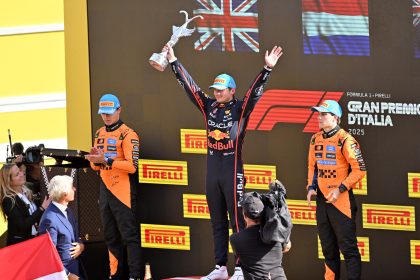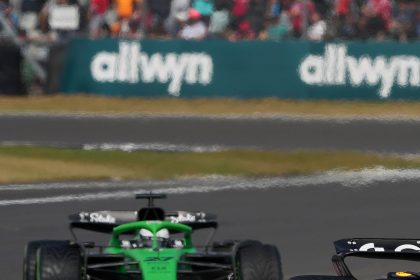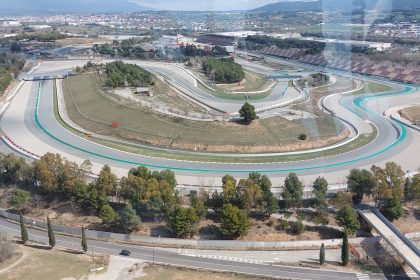The Heavy Side of Speed: Why Weight Rules Matter
Let’s get one thing straight: in Formula 1, every gram counts. We’re not talking about your gym gains here (though, shoutout to my neck workout crew 💪), but about the relentless, sometimes sneaky, always strategic battle to hit the minimum car weight. If you think this is just a bunch of engineers with scales, think again. This is where the real F1 drama happens—where championships are won, lost, or, in some cases, straight-up stolen.
- The Heavy Side of Speed: Why Weight Rules Matter
- The Rulebook: Minimum Weight, Maximum Drama
- Ballast: The Secret Sauce (or, How to Cheat Without Cheating)
- The Ballast Game: Engineering Chess at 300km/h
- The Cheaters’ Hall of Fame: When Teams Push Too Far
- The Human Factor: Drivers, Diets, and the “Jockey” Era
- The 2025 Situation: Are We Too Heavy Now?
- TikTok Take: The Ballast Game in 30 Seconds
- The Buzz Online
- Final Lap: Why This Matters
So buckle up, because today we’re diving deep into the world of minimum car weight rules and the legendary ballast game. Spoiler: it’s juicier than a Ferrari team radio meltdown.
The Rulebook: Minimum Weight, Maximum Drama
First, the basics. The FIA sets a minimum weight for F1 cars—currently 798kg for 2025, including the driver but excluding fuel. Why? To keep things fair and safe. But, as with everything in F1, the devil’s in the details.
Back in the day, teams would starve their cars (and sometimes their drivers—yikes) to get as light as possible. But as safety features, hybrid tech, and those chunky 18-inch wheels got added, the minimum weight has crept up year after year. (Seriously, check out this graph from ApexBite—it’s like my pizza consumption during race weekends: always trending up.)
But here’s the kicker: if your car is underweight after the race, you’re out. No points, no trophy, just a long, awkward flight home. Just ask George Russell, who got DQ’d after “winning” the Belgian GP because his car was 1.5kg too light. Ouch.
The Telegraph, 2024:
As soon as it was announced that his car was being investigated for being underweight, a disqualification was almost inevitable.
Ballast: The Secret Sauce (or, How to Cheat Without Cheating)
Here’s where things get spicy. If a team manages to build a car under the minimum weight, they can add ballast—basically, lead weights—anywhere they want (within the rules, of course). This isn’t just about making up the numbers; it’s about tuning the car’s handling to perfection.
Want more front-end grip? Stick some ballast up front. Need better traction out of slow corners? Move it to the rear. It’s like F1’s version of Tetris, but with millions of dollars and world championships on the line.
Check out Oscar Piastri breaking it down for McLaren fans: YouTube: F1 Weight Distribution EXPLAINED! #F1Translations
And yes, teams have gotten creative with this. Remember BAR’s “hidden” fuel tank in 2005? They used extra fuel as secret ballast, running underweight during the race and topping up at the end. FIA was NOT amused.
The Telegraph, 2024:
They had extra (unused) fuel in the secondary tank at the car’s final pit stop to act as ballast and ensure the car met the weight limit. This meant that the car could run underweight for much of the race. That clearly contravened the regulations.
The Ballast Game: Engineering Chess at 300km/h
Let’s get nerdy for a sec. The placement of ballast is a dark art. Teams use it to fine-tune weight distribution, which affects everything from tire wear to cornering balance. The goal? Hit that magic 50:50 front-to-rear ratio (or as close as your car’s design allows).
If you’re a real engineering geek (like me), you’ll love this deep dive from Grassroots Motorsports: Understanding corner weights
But it’s not just about balance. Ballast can also lower the car’s center of gravity, making it more stable through high-speed corners. That’s why teams spend millions shaving grams off every component—so they can add that weight back in the perfect spot.
And yes, sometimes it goes wrong. If you miscalculate, you end up like Russell at Spa—DQ’d for being too light, all because of unexpected tire wear and missing “pick-up” (that’s the rubber marbles drivers collect on their in-lap to bulk up the car for the scales).
The Cheaters’ Hall of Fame: When Teams Push Too Far
F1 history is littered with teams who tried to game the weight rules. Some got away with it (for a while), others got the hammer.
- Tyrrell 1984: Added lead shot to the water injection system. FIA said “nice try” and banned them.
- BAR 2005: Secret fuel tank. Banned for two races.
- Sauber 2011: Clever use of ballast to pass crash tests, then removing it for the race. FIA closed that loophole fast.
For a full list of F1’s weight rule scandals, check out this banger from Motorsport.com: Banned: When F1 teams cheated the minimum weight rules
GTPlanet Forum User:
If your car is way underweight, it gives you more freedom to use ballast to tune the balance of the car.
The Human Factor: Drivers, Diets, and the “Jockey” Era
Let’s not forget the drivers. Before 2019, the minimum weight included the driver, so being a lightweight was a massive advantage. Some drivers went full MMA weight-cut mode, skipping meals and sweating out kilos before the race. Not healthy, not cool.
Now, there’s a separate minimum for the driver + seat (80kg), so bigger drivers aren’t penalized. But the ballast game is still real—if your driver is lighter, you get more ballast to play with. More tuning options, more performance. Sorry, Max Verstappen, you can’t just eat more stroopwafels and call it a day.
Hypercar driver, Daily Sportscar, 2025:
It’s absolutely necessary. We have a situation where drivers who weigh significantly less can offset BoP ballast. It’s crazy that it hasn’t been thought about in recent years.
The 2025 Situation: Are We Too Heavy Now?
Here’s the hot take for 2025: F1 cars are HEAVY. Like, “my dog after stealing my pizza” heavy. The minimum weight has ballooned thanks to hybrid systems, bigger wheels, and safety features. Some teams (cough, Red Bull, cough) are still managing to build underweight cars, but most are struggling just to hit the minimum.
There’s talk in the paddock about lowering the weight limit for 2026, but with new power units and even more safety tech coming, don’t hold your breath. Until then, the ballast game is more important than ever.
TikTok Take: The Ballast Game in 30 Seconds
If you want the TL;DR, here’s my TikTok summary (imagine me waving my arms and screaming at the camera):
- F1 cars have a minimum weight. Too light? You’re DQ’d.
- Teams build cars as light as possible, then add ballast to hit the limit.
- Ballast = secret weapon for handling and balance.
- Cheating? Oh yeah, it’s happened. FIA is watching.
- Drivers used to starve themselves. Now, they just get more ballast.
- 2025 cars are heavy, but the ballast game is still the ultimate engineering flex.
The Buzz Online
Want to go even deeper? Here’s your rabbit hole:
- Why George Russell’s car was underweight – Yahoo Sports
- Understanding corner weights – Grassroots Motorsports
- Reintroduction Of Driver Weight Ballast Being Considered – Daily Sportscar
- GTPlanet Forum: Ballast on race cars?
- Instagram: F1 Technical Analysis
- X.com: @ScarbsTech on F1 ballast
- F1Technical.net Forum: minimum seat and driver weight
Final Lap: Why This Matters
The minimum weight rules and the ballast game are the ultimate test of F1’s engineering brains. It’s not just about building the fastest car—it’s about building the smartest one. Every team is playing chess at 300km/h, and sometimes, the difference between glory and heartbreak is just a couple of kilos.
So next time you see a car crawling around on the in-lap, picking up rubber, or hear a team radio about “weight targets,” you’ll know: the real race is happening long before the lights go out.
And if you’re ever at my place for a race weekend, don’t touch my pizza. That’s MY ballast.












